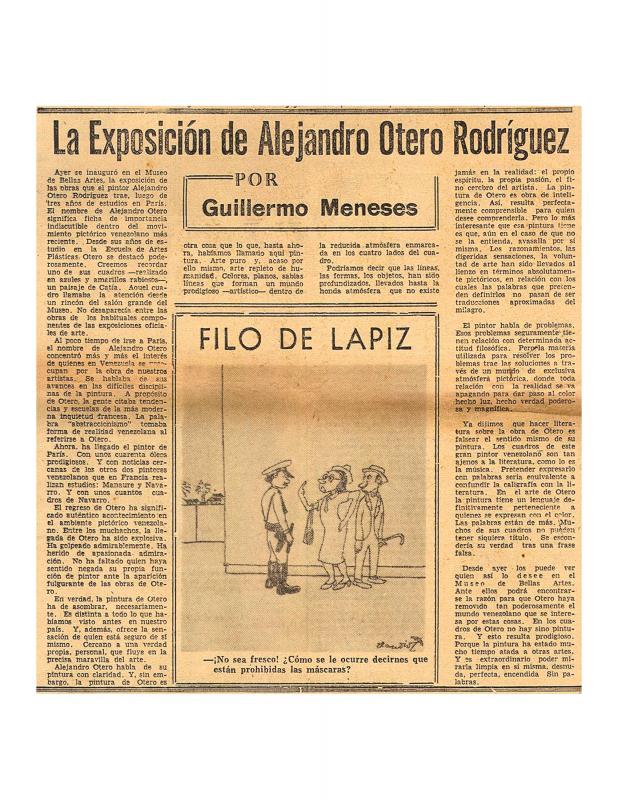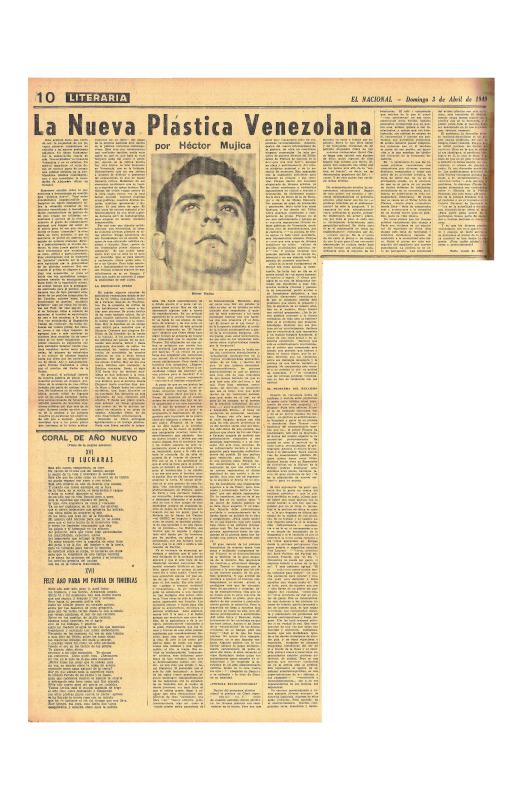Vertical vibrante, the monumental sculpture created by the Venezuelan painter and sculptor Alejandro Otero (1921–90), was installed in 1968 on the outskirts of the city of Maracay, in the state of Aragua, Venezuela. In this essay, Roberto Guevara (1932–98) discusses the event and its importance within the context of the Venezuelan visual arts. Ever since 1967, Otero had been working on kinetic works to be installed in urban spaces where they would be affected by natural elements (light, wind, water, and so on). An important event during that period was Otero’s involvement in the Zona Feérica de El Conde (Caracas) project—a fairground where the Imagen de Caracas show was presented to celebrate the four hundredth anniversary of the city—for which Otero designed a series of sculptures. According to Roberto Guevara, Vertical vibrante was originally intended as part of the fairground series, but instead was installed in the city of Maracay. Having provided this background information, Guevara explains that Otero’s main contribution to contemporary Venezuelan art was the work he designed to be installed outdoors, thus distancing himself to some extent from conventional spaces for the exhibition—or isolation?—of art. Guevara describes the functional aspects of Otero’s outdoor sculpture based on its aesthetic and factual interaction with the real world; that is, the urban environment and the elements. The author stresses the “real” nature of Vertical vibrante, acknowledging what was (at that particular time) a different way to experience the city, the people’s shared heritage, and public art.
To read other critical articles about Otero’s work, see the article by J. R. Guillent Pérez “Realidad e irrealidad: El postigo de Alejandro Otero” [doc. no. 1172158]; the essay by Guillermo Meneses “La exposición de Alejandro Otero Rodríguez” [doc. no. 1097092]; the article by François Sego in the catalogue for the exhibition “Alejandro Otero” (1949) [doc. no. 850732]; the essay by the journalist Héctor Mujica “La nueva plástica venezolana” [doc. no. 850512]; and the essay by writer Elizabeth Schon “Los coloritmos de Alejandro Otero” [doc. no. 1172142].





